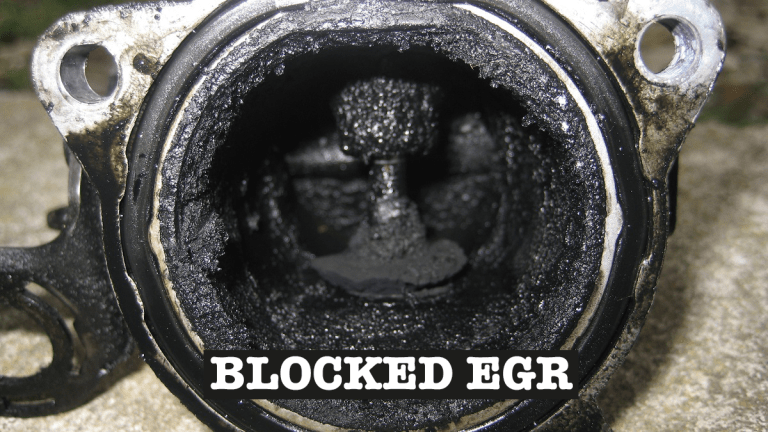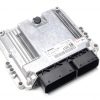What Is An EGR (Engine Gas Recirculation)?
EGR valves help all cars run more efficiently and completely burn fuel by recirculating a portion of your exhausts emissions and running these emissions through the combustion process again. This process results in a more complete burn of fuel, which then decreases your cars noxious emissions by prohibiting the release via the exhaust of some harmful gasses.
Why Do EGR Valves Fail?
The EGR is designed to open and close (normally electronically) at certain times through the rev range, but these valves get clogged up with carbon deposits, which can make them a fail, or even get stuck altogether either open or closed.


Every engine is different but symptoms can vary from poor idling speed, knocking, loss of power, engine unresponsive, black smoke from the exhaust pipe, and the engine management light coming on. If not dealt with, this can lead to turbo damage, a very expensive part when compared to the cost of an EGR replacement. Some theories of failure range from, poor quality electronics used by some manufacturers to the extended service intervals now in place. Should you experience any of these symptoms, contact us we may have the permanent answer to these re-occurring issues.
How Do I Solve The Issue?
By remapping and deleting your EGR valve you can make your cars engine run a lot better because when the EGR valve was in operation the ECU could prepare for the valve opening and alter the fuel and spark making a delay in detonation, but if the EGR valve is not in operation then the ECU will not alter the fuel and spark meaning there is no delay leading to a smoother running engine. Deleting the EGR valve via a remap is basically coding the ECU to not open the EGR valve ever, meaning any issues caused by the EGR valve are ruled out because it will never be used. This means that you dont need to actually remove the EGR valve which would cost a lot of money. Also if you come to Layton Remaps for an EGR removal there will be a nominal price for a remap.
- Possible fault codes: P0400 (Exhaust Gas Recirculation Flow Malfunction) may mean that one or more of the following has happened:
The EGR passage is plugged restricting the flow of exhaust gases, EGR solenoid is faulty, Faulty EGR wiring/harness or the vacuum lines are damaged or disconnected from the solenoid or valve.
- P0401 (Insufficient EGR Flow) most likely means one or more of the following has happened:
The DPFE (differential pressure feedback EGR) sensor is faulty and needs to be replaced, there is a blockage in the EGR (tube) most likely carbon build up, The EGR valve is faulty or The EGR valve may not be opening due to a lack of vacuum.
- P0402 (Exhaust Gas Recirculation Flow (EGR) Excessive Detected) most likely means one or more of the following has happened:
- The DPFE (differential pressure) sensor is faulty and needs to be replaced, there is a blockage in the EGR (most likely carbon build up), the EGR valve is faulty, The EGR valve may not be opening due to a lack of vacuum.
- P0403 (Exhaust Gas Recirculation Circuit Malfunction) could be any of the following:
Bad EGR solenoid, Excessive resistance in control circuit (PCM controlled ground) due to an open, chafing or damage to the harness, Poor connection at the EGR solenoid harness (worn or loose pins), Water intrusion at the EGR solenoid harness, Blockage in EGR control solenoid holding solenoid open or closed causing excessive resistance, Loss of supply voltage to EGR solenoid, Bad PCM (Powertrain control module).
- P0404 (Exhaust Gas Recirculation Circuit Range/Performance) Usually this code points to either carbon build up or a bad EGR valve. However that doesnt rule out the following:
Open or short in the 5 Volt reference circuit, Open or short in the ground circuit, Open or short in the PCM controlled voltage circuit, Bad PCM (less likely).
- P0405 (Exhaust Gas Recirculation Sensor A Circuit Low) Potential causes include:
Short to ground in EGR signal or Reference circuits, Short to voltage in EGR ground or signal circuits, Bad EGR valve, Bad PCM wiring issues due to chafing or loose terminals.
- P0406 (Exhaust Gas Recirculation Sensor A Circuit High) Potential causes include:
EGR sensor signal circuit shorted to B+ (battery voltage), EGR sensor signal circuit shorted to the 5 volt reference circuit to EGR, EGR sensor ground circuit open, EGR sensor signal circuit open, Bad EGR (internal failure on EGR sensor or solenoid), Debris caught in valve and holding it open or closed.
- P0407 (Exhaust Gas Recirculation Sensor B Circuit Low) This code has basically the same causes as code P0405
- P0408 (Exhaust Gas Recirculation Sensor B Circuit High) This code has basically the same causes as code P0406
- P0409 (Exhaust Gas Recirculation Sensor “A” Circuit)Potential causes include:
Defective EGR sensor, Defect in the wiring harness to the sensor, EGR pintle stuck in the closed position and a build-up of carbon is preventing it from opening, Lack of vacuum to the EGR solenoid, Defective EGR solenoid, Defective EGR position sensor, Defective differential pressure feedback EGR sensor



